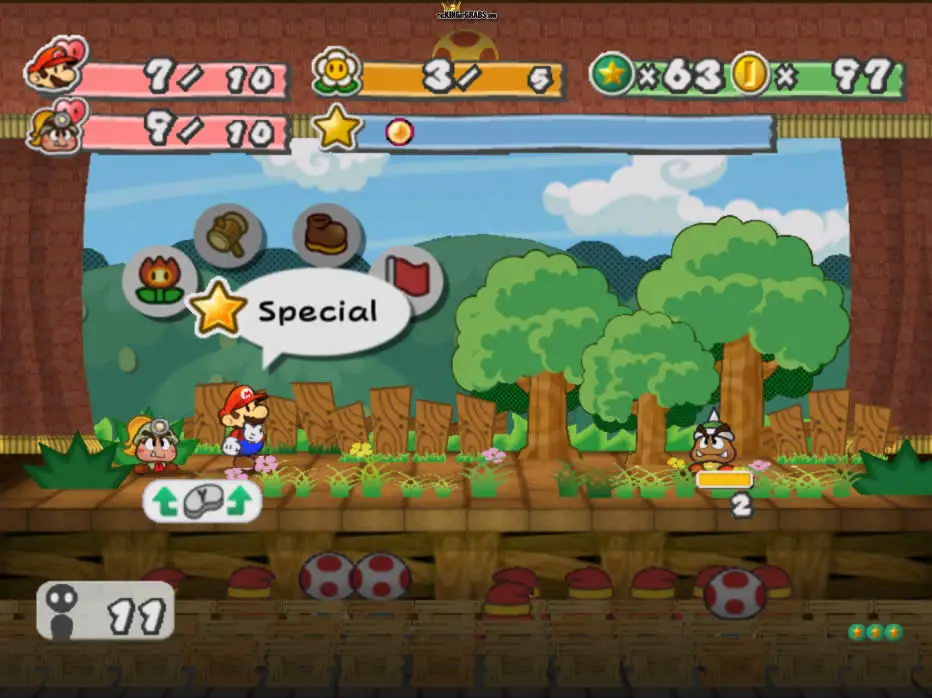Don’t know why, but lately I’ve been thinking about how great the Phantasy Star series used to be. It has rivaled the best turn-based games of the SNES and MegaDrive era; yet, for whatever reason, with the end of that era it too has ended. Sure, there were spinoffs, but nothing continuing the mainline story for almost ten years. When finally Phantasy Star Online came out on the Dreamcast it has ditched everything gamers loved about Phantasy Star – and has moved away from its turn-based roots. It was an MMO – hence “online” in its title.
While it was fun in its own right, it wasn’t the same. Gone were the turn-based battles favoring real-time action; gone was the epic story of grand scale. This, however, was just one of many game series that have forgone their turn-based origins. True, none of them on this list are worse off for changing genres. Yet, a part of me still wants to see them go back to their classic style – especially Phantasy Star. Without turning back, here are three series I’d like to return to their roots, even if for just one game.
Phantasy Star

Since it was because of Phantasy Star that I began this article, it’s only natural that I start with it. Phantasy Star first came out in 1987 for the Master System. It was SEGA‘s answer to the rising RPG genre, that has taken the world by storm on the NES; particularly Dragon Quest, from the previous year. To separate the series from other RPGs, SEGA had to be different. They did this by having a female protagonist – and Alis might just be the first female RPG protagonist. Then, a science-fiction setting instead of the popular fantasy, 3D dungeon crawling.
The first game would prove to be a hit, spawning a successful sequel on SEGA‘s latest system, the MegaDrive. After that second game’s success, the third, however, was a departure from the series. Still, it sold well, and had interesting ideas. For example, its story spans multiple generations, and changes depending on the next main character’s wife. If you’ve played a game that lets you control the protagonist’s descendants, chances are this was its inspiration.
Of course, I don’t see Phantasy Star Online going anywhere anytime soon – the games are doing quite well. Still, I wonder what the series would’ve looked like if SEGA stayed true to their turn-based roots as they’ve moved towards 3D. The two could coexist; look at Final Fantasy, for example – they have both an MMO and an upcoming single-player mode. With the success of SEGA‘s games like Streets of Rage 4 or Yakuza: Like a Dragon, a new Phantasy Star might be the perfect game for the company.
The Shining Series

The Shining series is another SEGA project that’s transitioned from turn-based to real-time. Yet, those transitions weren’t as simple as that of Phantasy Star. The first Shining was a turn-based dungeon crawler. But a year later, the series went in another direction – the style most players would associate with it: turn-based tactics. Finally, in 1995, it would add one more genre to the mix: real-time ARPG. For a while, the series would move between tactical turn-based and action – the Shining Force, and the Shining. Finally, it veered into straight-up real-time action RPG with the latest release in 2014, Shining Resonance – which got a remake four years later.
I haven’t personally played the series’ real-time action games, besides the demo of Resonance (the less said, the better). The turn-based Shining Force on the Mega Drive, however, were classics. They had the combat of the Fire Emblem games, while allowing the player to explore the world, talk to NPCs and more. They were almost perfect with great stories, unique characters and fun tactical gameplay.
With it having been so long since a new game in the series, it’s about time Shining goes back to its turn-based roots. Considering how popular the other games in the genre, like Fire Emblem, are – now is as good time as it ever was. The game could even take inspiration from another SEGA classic, Valkyria Chronicles, which also hasn’t had a new game for some time.
Paper Mario

The Paper Mario series is an offshoot of the main Super Mario series. Some may also consider it an unofficial sequel to the classic SNES game, Super Mario RPG. The first Paper Mario was released for the 64 to a resounding success; years later, it would receive a sequel on Nintendo‘s next console, the GameCube. Both the 64 and GameCube versions were similar – they had the same gameplay, and they were turn-based. The only differences were due to the tech. When it came to the third game in the series, released on the Wii, fans expected more of the same, except with a new story. To their surprise, they were treated to a platformer, although similar to the mainline series in some regards. The following titles would change it up depending on the console they came out on – and the rest is history.
I will be honest here; I’ve enjoyed the later games as much as the two turn-based ones. After all, it’s Nintendo, and they know how to make a great game. But with the genre-changing after two games, part of me wishes it went back to its roots. Now, it isn’t like the Mario series is void of turn-based games – there are plenty, with the most recent release being the upcoming Mario + Rabbids. Still, I’d love to see a new turn-based Paper Mario, even if it’s a remake, combining ideas from the 64 and GameCube.
These are just three series I’d like to see going back to their turn-based roots. Yet, there are many more. The style, however, is once again rising in popularity. Now may just be the right time for our hopes to become reality – and who knows, maybe the next Phantasy Star will, once again, bring back the classic gameplay.






